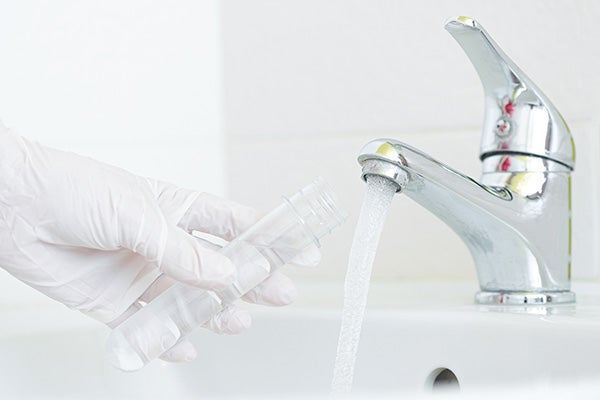Understanding PFAS

PFAS are a group of manufactured chemicals that are used in industry and consumer products. Per- and poly-fluoroalkyl substances (PFAS) are a large and diverse group of chemicals used in many commercial applications due to their unique properties, such as resistance to high and low temperatures, resistance to degradation, and nonstick characteristics.

Whose Pipe Is it?
Do you know who is responsible for correcting a problem in your water supply or drains? If not, this guide will come in handy.
Frequently Asked Questions
What are PFAS?
PFAS (per and poly-fluoroalkyl substances) are a group of manufactured chemicals that have been used in various industries for decades. They are known for their water and oil-repellent properties and their resistance to heat and chemicals.
Why are PFAS a concern?
PFAS have been linked to adverse health effects, including cancer, thyroid disease, and reproductive issues. They are also known as “forever chemicals” because they do not break down easily in the environment and can accumulate in the body over time.
How does PFAS contaminate water?
PFAS can enter the environment (soil, air, and water) through industrial discharge, runoff, leaching from landfills where products containing PFAS are disposed of, etc. Once in the environment, they can contaminate groundwater and surface water sources used for drinking water.
Is my water contaminated with PFAS?
Trace amounts of PFAS compounds have been found in the Smith Mountain Lake water supply; they are all well below the EPA’s regulated maximum contaminant level, as is shown in the chart below:
| Chemical | Maximum Contaminant Level (MCL) | Smith Mountain Lake Water Treatment Facility (August 2022) | Central Water Treatment Plant (August 2022) |
| PFOA | 4 ppt | 0.81 ppt | Non-Detect |
| PFOS | 4 ppt | 1 ppt | Non-Detect |
| PFHxS | 10 ppt | 0.53 ppt | Non-Detect |
| HFPO-DA | 10 ppt | 5 ppt | Non-Detect |
| PFNA | 10 ppt | Non-Detect | Non-Detect |
| Hazard Index | 1 | 0.56 | 0 |
How can I reduce my exposure to PFAS?
To reduce exposure to PFAS, you can:
- Avoid products that contain PFAS, such as non-stick cookware and stain-resistant fabrics.
- Use alternative products labeled as PFAS-free.
- Install a water treatment system designed to remove PFAS from drinking water, such as activated carbon filters or reverse osmosis systems.
- Follow any advisories or recommendations from us (BRWA), Virginia Department of Health (VDH), and relevant government agencies regarding PFAS contamination in drinking water.
What is BRWA doing to address PFAS contamination?
BRWA is committed to ensuring the safety and quality of our drinking water. We regularly monitor for PFAS and other contaminants, implement treatment technologies to remove contaminants if necessary, and collaborate with regulatory agencies and stakeholders to address PFAS contamination.
What should I do if I have concerns about PFAS in my water?
We are here to address your concerns and provide information to help you make informed decisions about your water quality and safety. Here are some steps you can take if concerned about PFAS:
- Request Testing: We are happy to refer you to a certified laboratory, ensuring you receive accurate and reliable results.
- Consider Treatment Options: If PFAS are detected in your drinking water and you are concerned about potential health risks, consider installing a water treatment system that is designed to remove PFAS. Options include activated carbon filters, reverse osmosis systems, and ion exchange resins.
- Stay Informed: Follow updates from us (BRWA), the Virginia Department of Health (VDH), and relevant government agencies to stay informed about PFAS-related developments in your area. Be aware of any advisories or recommendations issued regarding PFAS contamination and take appropriate actions to protect your health.
PFAS contamination requires cooperation and collaboration between government agencies, water utilities, community members, and other stakeholders. By staying informed and taking proactive steps, you can help protect yourself and our community from the potential risks of PFAS exposure.
Where Can I Learn More?
If you are interested in learning more about PFAS, here are a few suggested resources:


